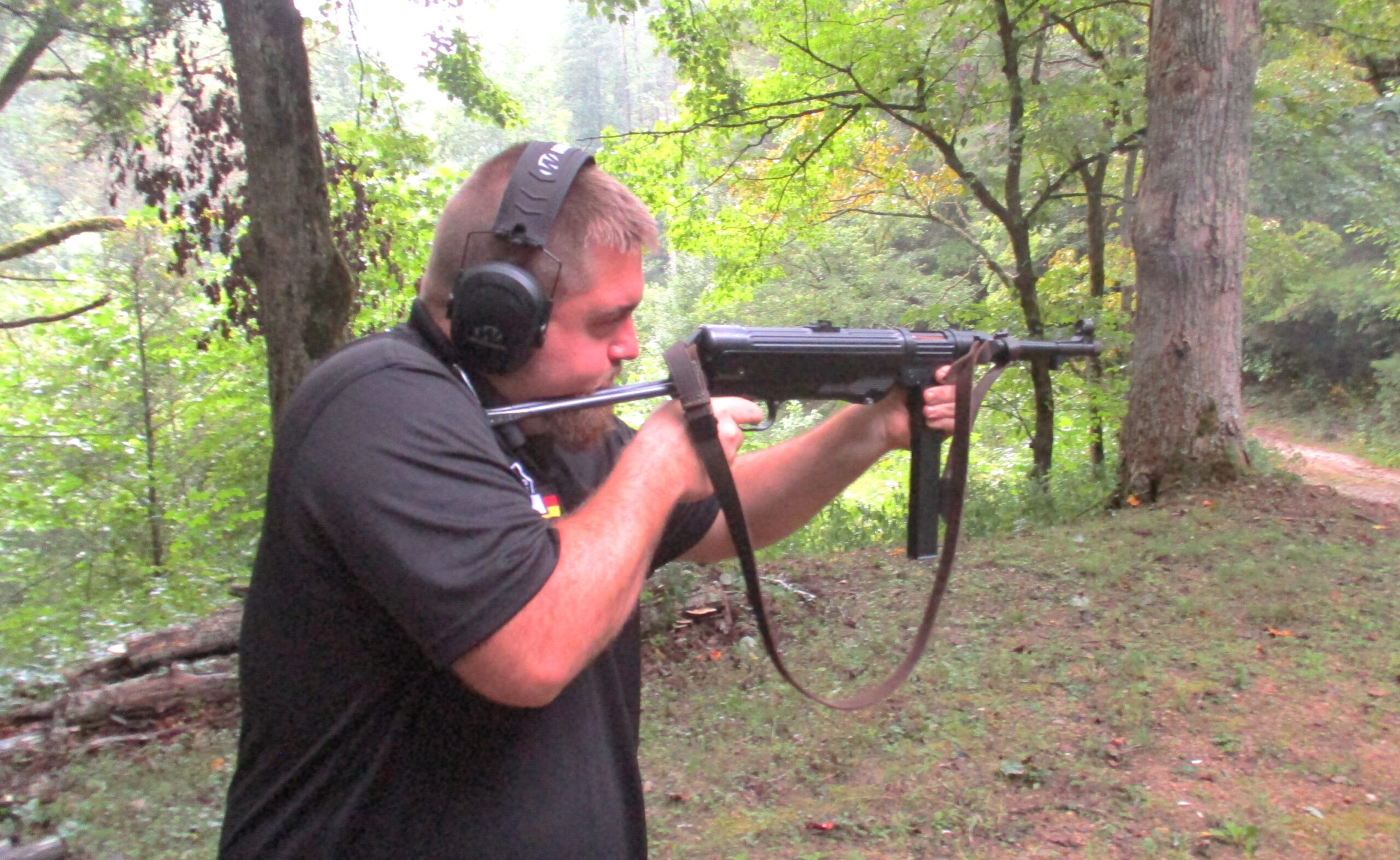
By Jim Dickson | Contributing Writer
The original German MP38 and it’s later stamped metal version, the MP40, rank as one of the all-time greatest submachineguns, and today you can get a semi-auto only version of the MP38 from DK Productions.
The price is $4200 due to the small limited production runs that require expensive dies and tooling plus the Bakelite handguard for the trigger group has to be made in Germany. Bakelite can no longer be made in the U.S. thanks to Federal regulations on the chemicals used in its manufacture.
Fit and finish is without flaw and the gun shows remarkably good workmanship in its construction. This is a gun that you can stake your life on in when the chips are down.
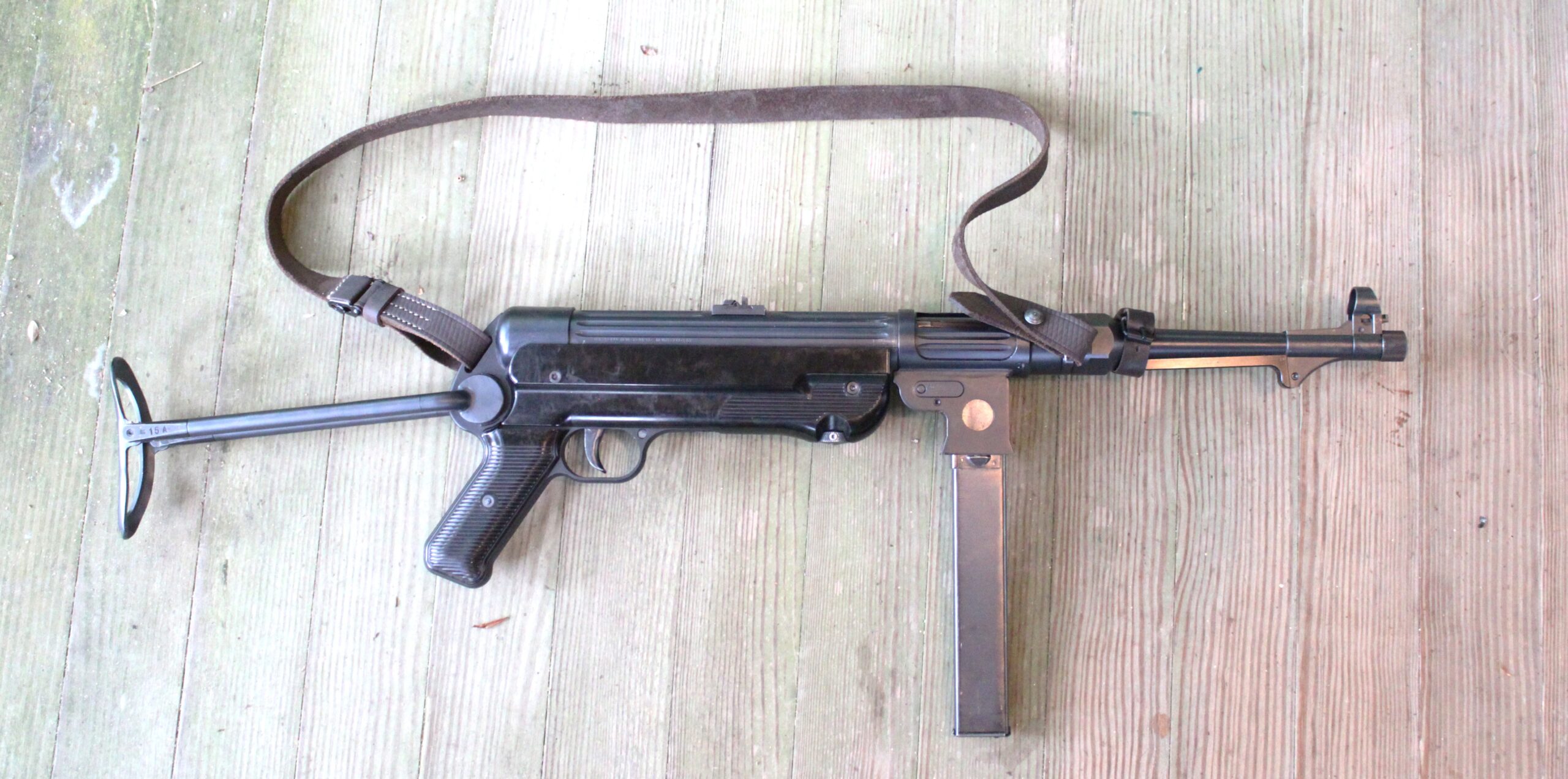
At the time of its creation and during its service, the MP38 9MM submachinegun was known as a gun that could accurately place it’s bursts on target out to well over 200 yards and was one of the best pointing and fastest on- target submachineguns ever made. It’s reliability and it’s controllability in long full automatic bursts is legendary among its users.
The DK Productions semi-auto version is sold as a pistol shipped without a stock and it can also be had registered as a short barreled rifle with the folding stock attached.
Corey Baker and his wife, Kayla brought one to my farm for test firing for this article along with the semi-auto Stg44 rifle covered last month. The MP38 was a joy to shoot having no felt recoil and the instinctive pointing characteristics of a Luger pistol.
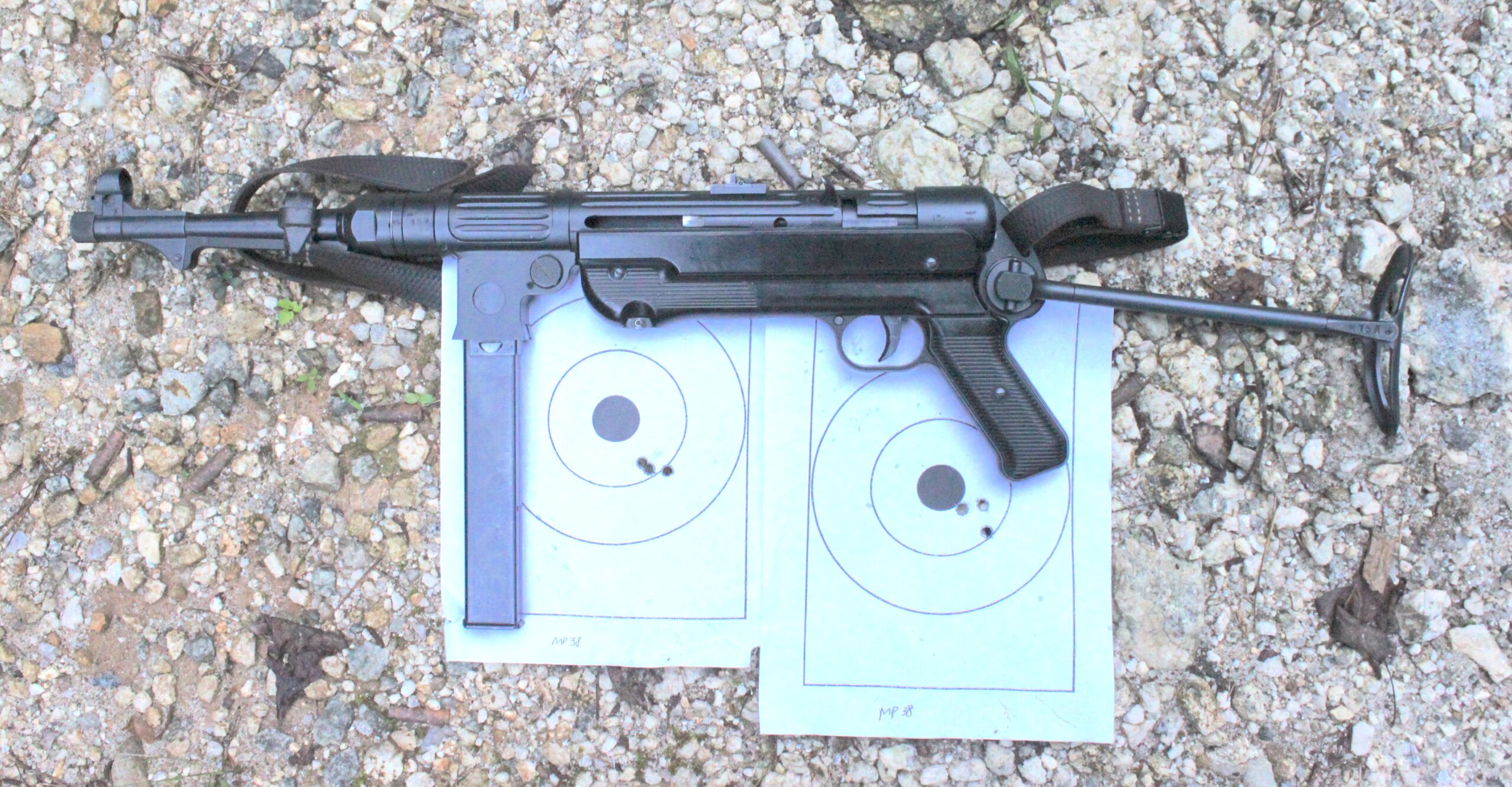
I had 250 rounds of Privi Partizan ammo for the field test. It should be noted that this gun functions perfectly with round nosed ammunition but does not like flat nosed hollowpoints. We had limited time for shooting and by the time we finished producing targeted groups, it was getting so dark that Corey had trouble seeing the front sight.
This is where the virtues of an accurate pointing gun shine for the gun still delivered acceptable groups even when the sights were almost useless in the gathering dark. This ability place it’s bullets on target when you can’t see your sights was very important to German soldiers during the war. It can also save your life in a similar emergency.
PURE NOSTALGIA: DK PRODUCTIONS’ SEMI-AUTO STG44
This is a classic gun whose value is not confined to collectors. It makes a suitable small game and subsistence hunting rifle as well as a potent and intimidating defensive arm. While it may not possess the full auto fire of the originals it should be remembered that on the old U.S. BAR firing course, the BAR consistently ranked higher scores with rapid semi-auto fire than it did with full auto fire so you still have a very effective weapon. With it’s short barrel and folding stock it becomes a far more compact package than traditional rifles. This can be very important for transporting, vehicle carry, or keeping it dry and under protective cover in the rain.
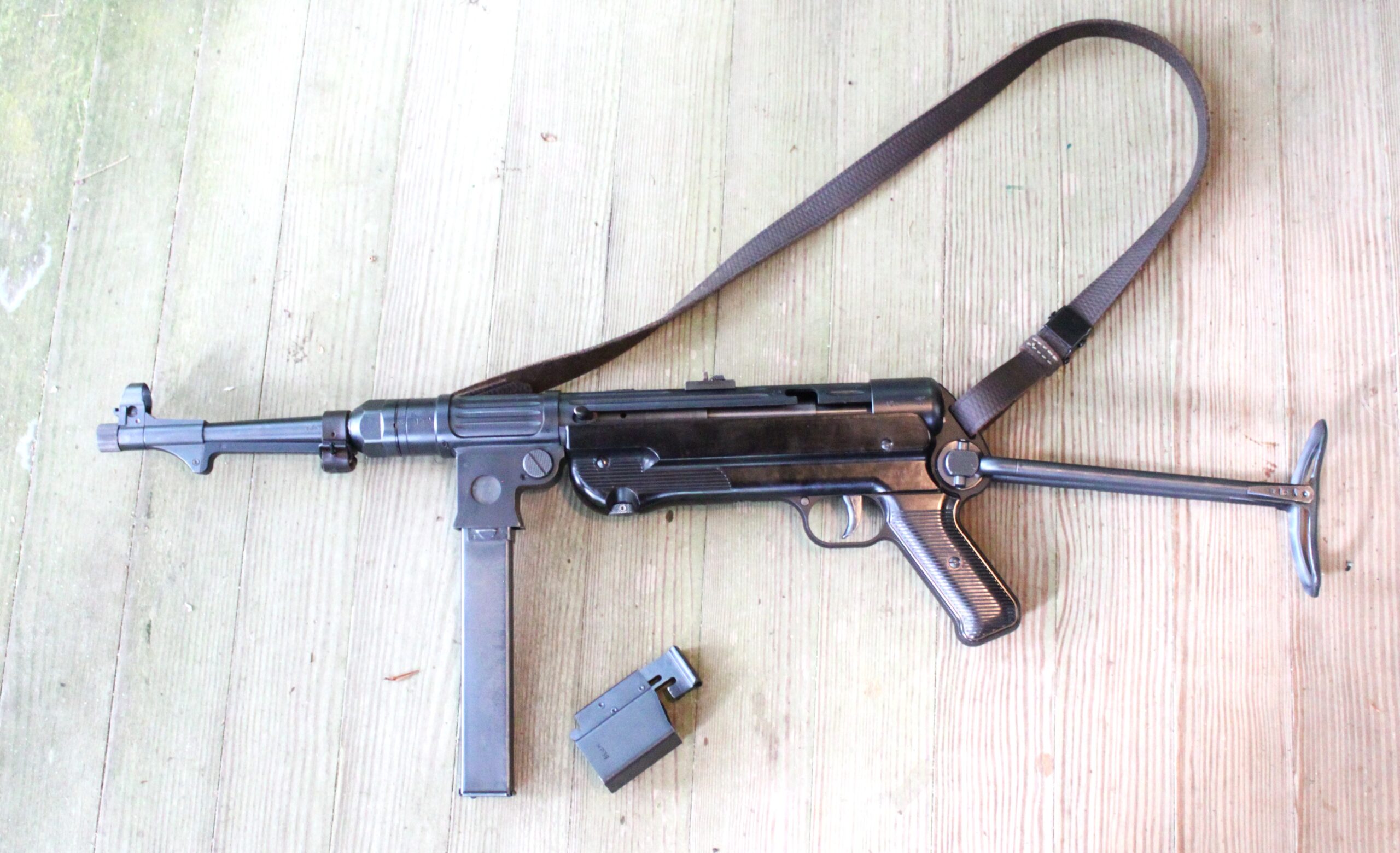
In the Beginning
The story of the MP38 began with the invention and patent of the Vollmer telescoping operating spring assembly. Encasing the operating spring in a telescoping case prevented the gun from jamming when dropped in the mud for no longer could a big wad of mud be forced into the mechanism sufficient to prevent the gun from functioning. This was the invention of Heinrich Vollmer, a director at the Erma factory and Berthold Geipel, the owner and director of Erfruter Werkzeng und Maschinenfabrik in Erfurt-better known as Erma.
The patentee was the German firm of Erma and the MP38 was a submachinegun that they designed to use it.
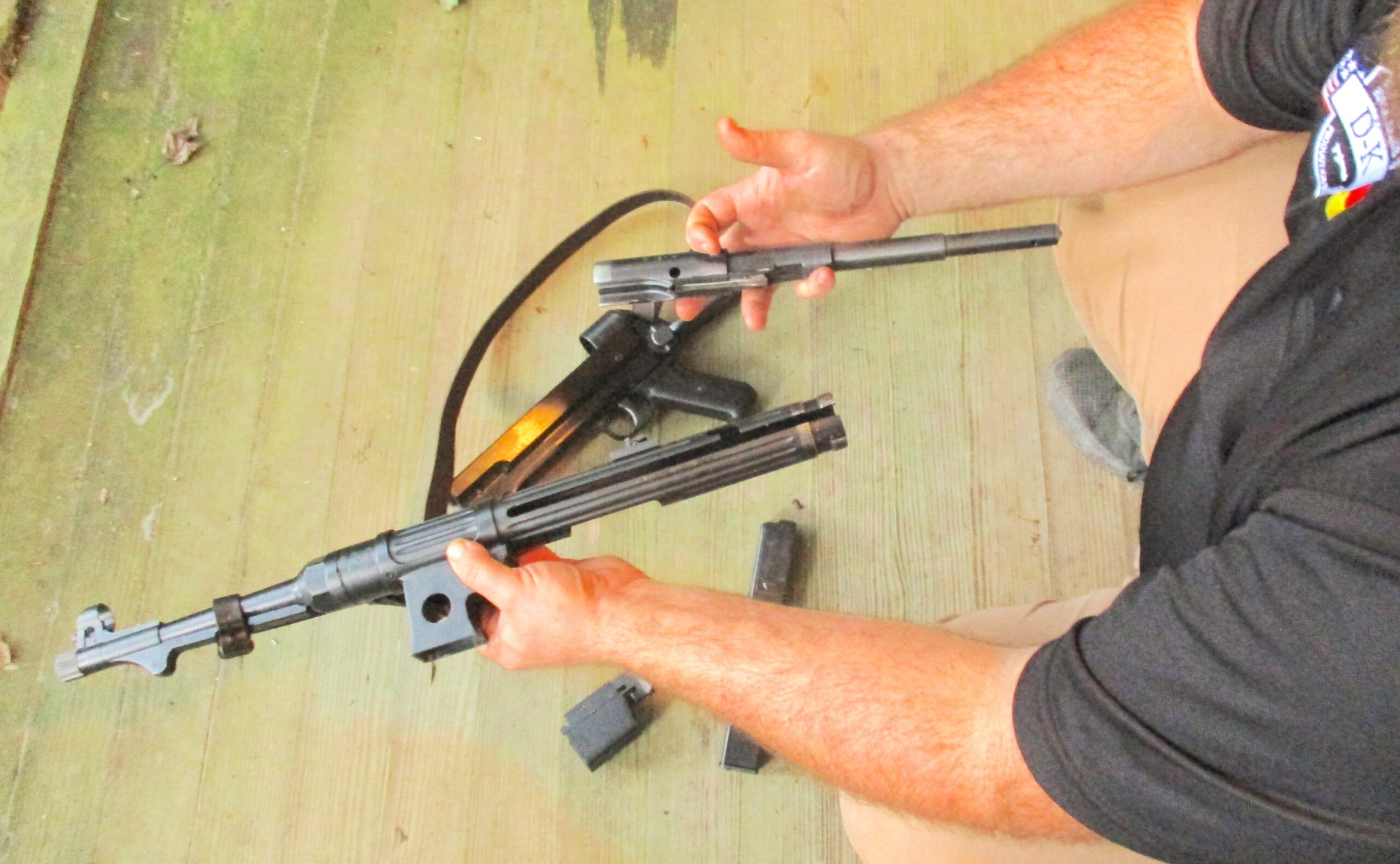
Contrary to popular myth, the design was that of the Erma factory and not Hugo Schmeisser although it did adhere to the basic formula of inch ounce ratio of bolt travel to bolt weight used to make the earlier Schmeisser designs for the MP18 and the MP28 so controllable in full automatic fire. At the time, Schmeisser was the general manager of the Haenel plant in Suhl, which later became a subcontractor for the subsequent stamped metal version of the MP38, the MP40, and he did design the wood stocked version, the MP41. The actual designer and patentee of the MP38 was Geipel.
The MP38, like most submachineguns, fires with advanced primer ignition whereby the firing pin sets off the primer before the cartridge is fully chambered thereby greatly reducing the recoil impulse as the forces of recoil first must overcome the considerable inertia of the bolt, which is still traveling forward at the moment the cartridge fires.
The MP38 uses the same firing pin as the first German submachinegun, the MP18 of The Great War. This is important as the firing pin length can be adjusted as needed to insure correct ignition at the proper point. The critical dimensions are in the barrel to the end of the chamber, the depth of the bolt face, and the length of the firing pin protrusion. The Germans were very careful to get these perfect.
With guns that just have a fixed firing pin integral to the bolt like the Sten, the M1A1 Thompson, and the M3 Grease Gun, this cannot be adjusted and if your bolt has the wrong firing pin protrusion that ignited the cartridge too late your recoil and cyclic rate goes up and your controllability goes down. All you can do is try another bolt and hope that it works better. A rather expensive solution, particularly if it takes multiple bolts before you get a good one.
The MP38 was the first successful machinegun to have a folding stock, the first with no wood, and the first with all metal and plastic construction. The trigger housing unit is paper reinforced phenolic plastic. I have never seen one deteriorate with age.
The grip has the same angle as the famed Luger pistol which greatly aids accurate pointing as does the positioning of the hands the proper width apart, and the grip frame was anodized aluminum, later changed to sheet metal in the stamped metal version, the MP40.
Meanwhile, the upper receiver was machined and nicely polished inside and out. There was a lugged bar under the barrel for resting on the wall of a halftrack enabling you to bear down on the barrel while firing to prevent muzzle climb while the lug would stop the barrel from riding back into the vehicle. This stiff lug also prevented the minute barrel bending that would have otherwise occurred and thrown the shots higher during this operation. Looped behind the neck like a pair of binoculars strap, the sling was well thought out. It pulled tight in firing position, acting as the third leg of a tripod against the pull of the arms for increased stability during firing. The original safety was the usual notch in the back of the path of the cocking handle, allowing the cocking handle to be held up in the cocked position. After a few wartime accidents, a second notch was added to the closed position and a new cocking handle was fitted that would lock the bolt shut on an empty chamber. These were designated the MP38/40 or “The mixed model” as it shared this safety with the MP40.
The Germans had not adopted a submachinegun since the MP18 of WWI, when the High Command reconsidered a 1936 request from the Panzer Corps for a new submachinegun in 1938. The Result was the MP38, a gun which was much loved by its users.
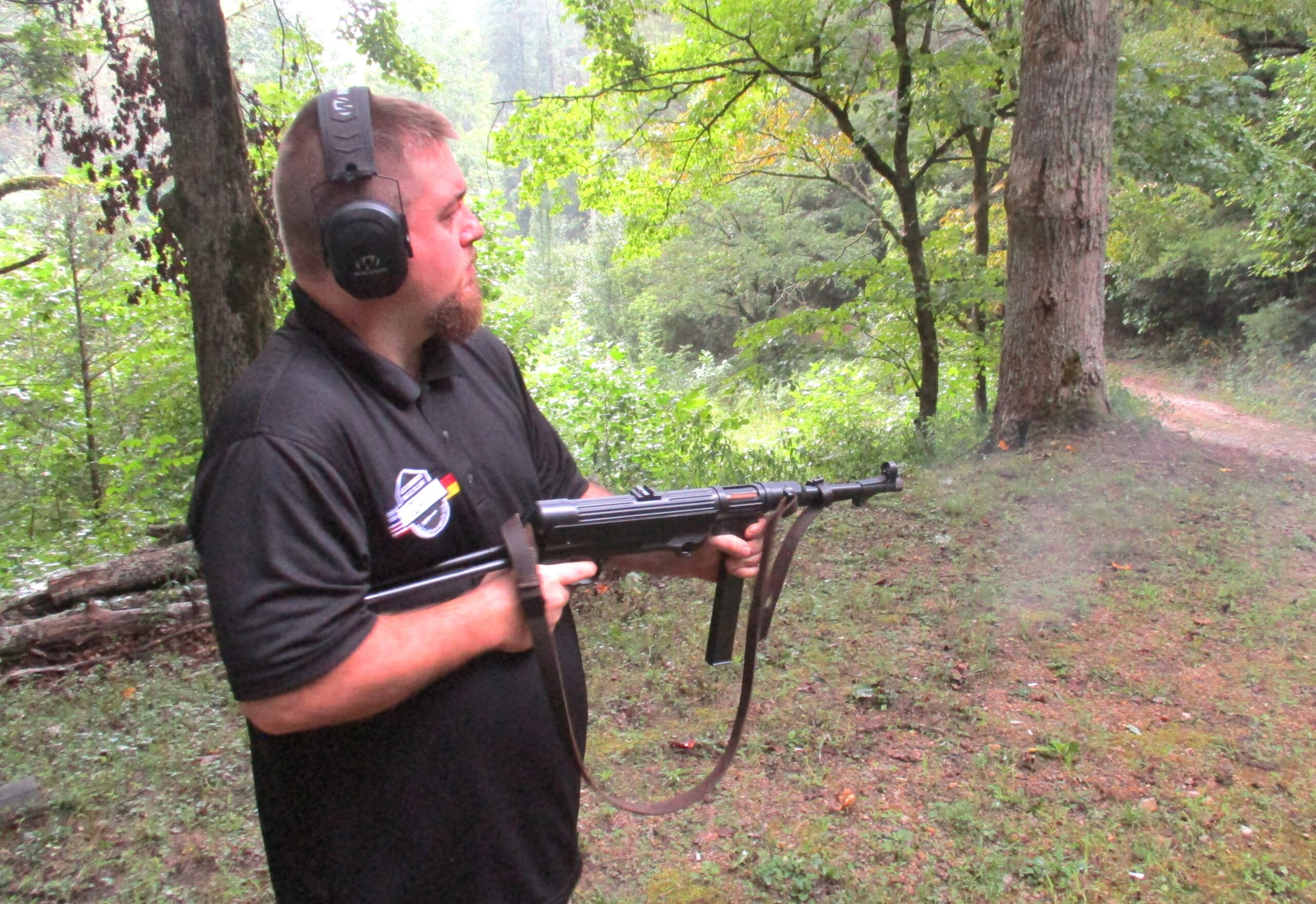
Wartime production was slowed by the old school methods of manufacture and wartime quantity demands led to it being redesigned for much faster production. This was the MP40, essentially the same gun but slightly lighter at 8.7 pounds instead of the 9 pounds of the MP38. The MP40 was the first high quality gun made of cheap materials by cheap methods. Sheet metal stampings were made into gun parts by fusion welding, brazing, spot welding, riveting, and crimping. All the metal on the MP40 was mild steel except for the barrels, springs, and the sear, and it all worked and kept on working. This is the acid test of a good design. The famous gun designer, Max Atchisson always said that a good design should still work if it is made from mild steel.
Most all of the men who used the MP38 and its stamped metal version, the MP40, in combat extensively considered it one of the finest, if not the finest submachinegun ever made. It was a gun that they had staked their life on repeatedly and it never let them down.
The DK Productions MP38 enables todays shooters a chance to own a legal semi-auto version of a classic wartime firearm. Collector prices have finally gotten so high that the extreme cost of making a limited production run is justified. The price may be high but so is the cost of tooling up and making a small run. I just wish that I could afford one.


